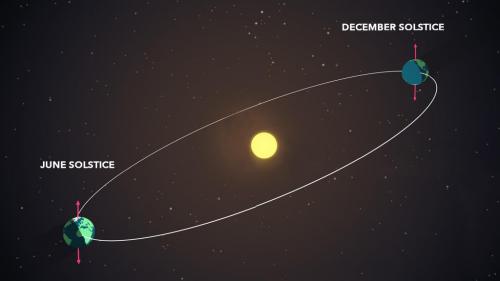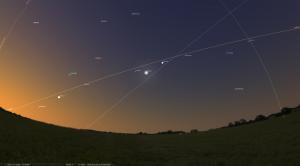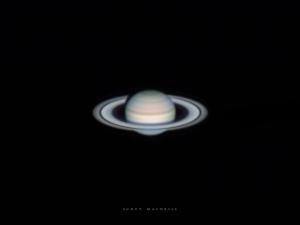Celebration of Space - June 17, 2022
This coming Tuesday, June 21, 2022 at 5:14 am ET, Earth will reach the point in its orbit where the Northern Hemisphere is at maximum tilt (23.4°) towards the Sun. This is the Summer Solstice, and marks the first day of summer in the north. On the Summer Solstice, the Sun will pass directly overhead at noon along the Tropic of Cancer, and will bring the shortest nighttime period of the year in the north. The Arctic Circle will see the Midnight Sun, and the Antarctic Circle will see Polar Night. This may be an awesome time for heat loving zealotry, but the super short nights make it a tough time for astronomy. Allowing for only 4.5 hours of dark sky conditions outside of twilight. Regardless, beach days, summer break, BBQ, mosquitoes, awesome sunsets, picnics, and sunburn are here for the next few months. Whether you hate it or love it, step out on Tuesday and feel the heat of the Summer Solstice and welcome summer. Have a happy Summer Solstice from all the astro-geeks at Frosty Drew Observatory and Science Center.
This coming week and next weekend will be the best times to get out in the morning predawn hours and catch sight of the fabulous conjunction of the planets that has been happening this year. Right now, all five naked eye-visible planets are in the morning sky together, stretching in a line from the ENE horizon upward to the South, and they are all in their correct order of distance starting from ENE. (Mercury, Venus, Mars, Jupiter, Saturn). What makes this week and next weekend even more special is that the waning crescent Moon will join in the conjunction. The result is that every naked eye-visible Solar System object will be in the sky together. To catch a view you will need to be out starting around 4:30 am, and at a location with a very low view of the ENE horizon. Venus and Jupiter will be the brightest planets, though Mercury will be visible as the lowest of the bunch. Though the conjunction will continue for most of the year, Mercury will depart from the conjunction in a couple of weeks time. If you get out and catch a view, let us know by replying to this, or sending an email to astronomer@frostydrew.org. We would love to hear your impressions.
This past week, Saturn has started to rise before midnight for our location. This is quite notable as it brings Saturn’s viewing season at Frosty Drew Observatory closer to kicking in. As of now, the ecliptic, which is the path the Sun takes across the sky, and represents the plane of the Solar System, is at its lowest for the nighttime period (Summer Solstice). Since the planets are all along the ecliptic, this will place Saturn very low in the sky, and even though the planet is rising earlier each night, it will take some time before Saturn clears the trees to our southeast. In any case, over the next month we will be taking our first views of Saturn in the new telescope, and will be kicking off the viewing season of our most popular object to view during our public events – Saturn. Check out this image of Saturn that we captured last year with the old 16 inch Meade telescope. The best time this year to view Saturn will be in August, as Saturn’s opposition, which is when Earth aligns between the Sun and Saturn, will happen on August 14th. Opposition is the closest point in our year to Saturn, and will offer up the best views of Saturn in a telescope. After opposition, Saturn will become easily visible just after sunset.
- Author:
- Scott MacNeill
- Entry Date:
- Jun 17, 2022
- Published Under:
- Scott MacNeill's Columns




